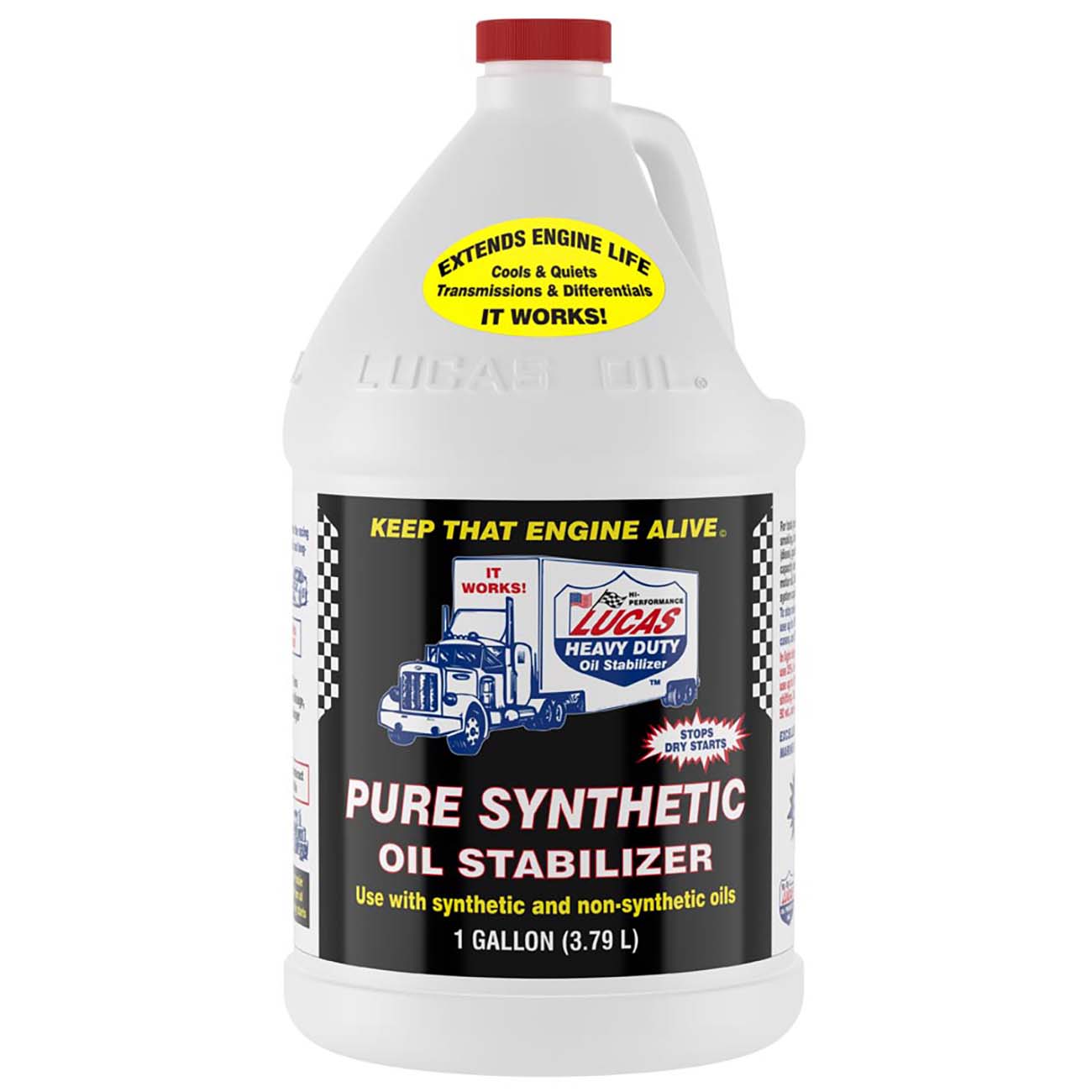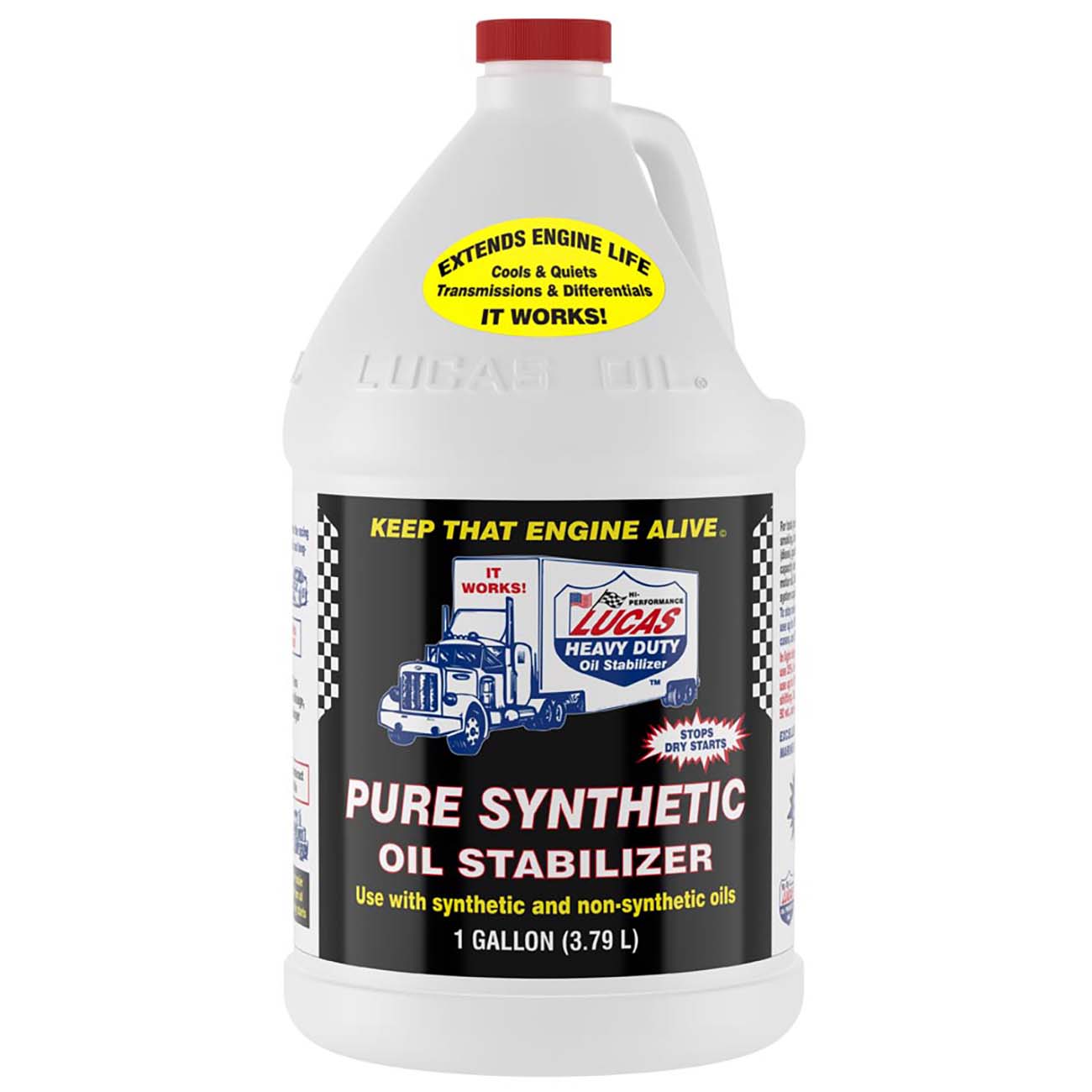Answer
Sep 04, 2024 - 06:57 AM
Yes, you can mix Lucas Oil Synthetic Heavy Duty (H/D) Stabilizer with synthetic oil. In fact, Lucas Oil Synthetic H/D Stabilizer is specifically designed to be compatible with all types of engine oils, including synthetic, semi-synthetic, and conventional oils. Mixing it with synthetic oil is a common practice and is recommended for enhancing the performance of your engine oil, particularly in high-stress or high-mileage applications.
Benefits of Mixing Lucas Oil Synthetic H/D Stabilizer with Synthetic Oil:-
Enhanced Lubrication:
- The stabilizer helps improve the lubricating properties of the synthetic oil, providing a thicker oil film on engine parts. This is particularly beneficial for engines that operate under high stress or extreme conditions, as it helps reduce friction and wear.
-
Improved Oil Stability:
- Lucas Oil Stabilizer enhances the stability of synthetic oil by reducing thermal breakdown and oxidation, especially at high temperatures. This ensures the oil maintains its protective qualities longer, even under harsh operating conditions.
-
Reduced Oil Consumption:
- The stabilizer can help reduce oil consumption, especially in older or high-mileage engines, by improving oil viscosity and reducing leaks. This is beneficial when using synthetic oils, which can sometimes be thinner at higher temperatures.
-
Prevents Dry Starts:
- Adding the stabilizer provides a protective coating on engine components, reducing the risk of dry starts after the vehicle has been sitting for extended periods. Synthetic oils combined with Lucas Stabilizer help maintain this protective film longer.
-
Compatibility:
- Lucas Oil Synthetic H/D Stabilizer is designed to be fully compatible with synthetic oils, ensuring that the chemical properties of the oil are not negatively affected when mixed. This compatibility helps maintain the overall performance and efficiency of the synthetic oil.
-
Determine the Amount Needed:
- For regular use, Lucas Oil recommends adding 20% of the total oil capacity as the stabilizer.
- For heavy-duty or high-stress applications, you can use up to 50% of the oil capacity.
- Example: If your engine holds 5 quarts of oil, you would add 1 quart of Lucas Oil Stabilizer (20% of total capacity).
-
Add During Oil Change:
- It is best to add Lucas Oil Stabilizer during an oil change. Drain the old oil, replace the oil filter, and then add the stabilizer to the engine before topping off with synthetic oil.
-
Check Oil Level:
- After adding the stabilizer and synthetic oil, check the oil level with the dipstick to ensure it is within the recommended range. Adjust if necessary by adding more oil or draining some if overfilled.
-
Run the Engine:
- Start the engine and let it run for a few minutes to allow the stabilizer and synthetic oil to mix thoroughly and circulate through the engine.
-
Monitor Performance:
- Regularly check the oil level and condition during routine maintenance. Using the stabilizer with synthetic oil can help maintain optimal engine performance and extend oil life.
- Do Not Overfill: Ensure that the combined amount of stabilizer and synthetic oil does not exceed your engine's recommended oil capacity.
- Follow Vehicle Manufacturer’s Recommendations: Always consult your vehicle’s owner’s manual for specific oil recommendations and capacity limits.
- Check for Specific Needs: While the stabilizer is beneficial for most engines, if your vehicle has special requirements or if it’s still under warranty, ensure that adding an oil stabilizer is permitted.
By mixing Lucas Oil Synthetic H/D Stabilizer with synthetic oil, you can enhance the protective and performance qualities of your engine oil, especially in demanding driving conditions.





Add New Comment